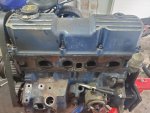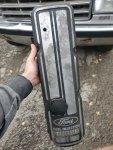ylidk
Member
- Joined
- Jul 16, 2018
- Messages
- 52
- Reaction score
- 7
- Points
- 8
- Location
- KS
- Vehicle Year
- 1991
- Make / Model
- Ford
- Engine Size
- 2.3l L4
- Transmission
- Manual
Performed a compression test after the test drive to check the condition of the engine:
1 - 120 psi
2 - 110 psi
3 - 110 psi
4 - 120 psi
I believe 120 psi is healthy compression for the 2.3 Lima, correct? This is a turbocharged engine so I'm not sure if the compression in each cylinder will be significantly lower than the healthy value in a N/A motor. If 120 is acceptable then the engine seems fine. Cylinders 2 & 3 are slightly lower but so cylinders are within 10% of each other. If thats healthy psi for a turbo motor then blow-by doesn't seem excessive. Can't say for sure when under boost I suppose?
1 - 120 psi
2 - 110 psi
3 - 110 psi
4 - 120 psi
I believe 120 psi is healthy compression for the 2.3 Lima, correct? This is a turbocharged engine so I'm not sure if the compression in each cylinder will be significantly lower than the healthy value in a N/A motor. If 120 is acceptable then the engine seems fine. Cylinders 2 & 3 are slightly lower but so cylinders are within 10% of each other. If thats healthy psi for a turbo motor then blow-by doesn't seem excessive. Can't say for sure when under boost I suppose?
Last edited:
















